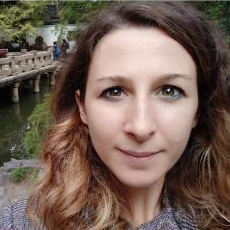Remote Sensing Monitoring of Geomorphological Hazards
A special issue of Geosciences (ISSN 2076-3263). This special issue belongs to the section "Natural Hazards".
Deadline for manuscript submissions: 30 June 2024 | Viewed by 5418
Special Issue Editors
Interests: engineering geology; natural hazard; disaster risk reduction; remote sensing; monitoring
Special Issues, Collections and Topics in MDPI journals
Interests: geomatics; engineering geology; remote sensing; monitoring
Interests: geomorphology; natural hazards; neotectonics; landslides; geological mapping
Special Issues, Collections and Topics in MDPI journals
Interests: engineering geology; remote sensing; landslides; InSAR; monitoring; modelling
Special Issues, Collections and Topics in MDPI journals
Interests: geomorphology; active tectonic; geochronology; coastal dynamic
Special Issues, Collections and Topics in MDPI journals
Special Issue Information
Dear Colleagues,
This Special Issue of Geosciences aims to gather high-quality original research articles, reviews, and technical notes on the use of remote sensing for geomorphological hazard monitoring.
Every year, geohazards severely affect humans, in terms of deaths and economic losses. The World Bank estimates that disasters cost the global economy USD 520 billion annually. Additionally, the Sendai Framework for Disaster Risk Reduction 2015-2030, the global plan to reduce disaster losses, focuses primarily on prevention, aiming to recognize disaster risks before they trigger events that lead to the loss of life, homes, and livelihoods. In fact, their impact can be reduced with a clearer understanding of both where and when potential geohazards are likely to occur.
In this context, there is no doubt about the value of remote sensing monitoring which has a crucial role in quantifying geohazards and their associated risks. Such an approach shows great potential for providing valuable information at various spatial and temporal scales for both knowledge and control purposes. The ongoing advances in remote sensing technologies and analysis, in terms of sensors, platforms, and processing algorithms, are strengthening the role of monitoring in prevention activities.
With this Special Issue, we propose state-of-the-art research that specifically addresses multiple aspects on the use of remote sensing for geomorphological hazard monitoring. The aim is to collect innovative methodologies, expertise, and capabilities to detect, assess, map, monitor, and model geomorphological hazards such as mass movements, floods, coastal processes, etc. We are interested in studies that showcase the broad range of applications of optical and multi/hyper-spectral data, SAR, thermal imaging, aerial photogrammetry, LiDAR, UAV surveys, structure-from-motion, etc.
Review contributions are welcomed, as well as papers describing novel sensors and promising applications for hazard assessments and monitoring, and for the implementation of early warning systems based on remote sensing data (either from terrestrial, airborne, or satellite sensors).
Dr. Saverio Romeo
Dr. Francesco Mugnai
Dr. Mauro Bonasera
Dr. Roberta Bonì
Dr. Ciro Cerrone
Guest Editors
Manuscript Submission Information
Manuscripts should be submitted online at www.mdpi.com by registering and logging in to this website. Once you are registered, click here to go to the submission form. Manuscripts can be submitted until the deadline. All submissions that pass pre-check are peer-reviewed. Accepted papers will be published continuously in the journal (as soon as accepted) and will be listed together on the special issue website. Research articles, review articles as well as short communications are invited. For planned papers, a title and short abstract (about 100 words) can be sent to the Editorial Office for announcement on this website.
Submitted manuscripts should not have been published previously, nor be under consideration for publication elsewhere (except conference proceedings papers). All manuscripts are thoroughly refereed through a single-blind peer-review process. A guide for authors and other relevant information for submission of manuscripts is available on the Instructions for Authors page. Geosciences is an international peer-reviewed open access monthly journal published by MDPI.
Please visit the Instructions for Authors page before submitting a manuscript. The Article Processing Charge (APC) for publication in this open access journal is 1800 CHF (Swiss Francs). Submitted papers should be well formatted and use good English. Authors may use MDPI's English editing service prior to publication or during author revisions.
Keywords
- engineering geology
- remote sensing
- geomorphology
- geomatics
- natural hazards
- monitoring
- InSAR
- LiDAR
- imaging
- photogrammetry
- digital image iorrelation
- hazard assessment and monitoring
- early warning system









